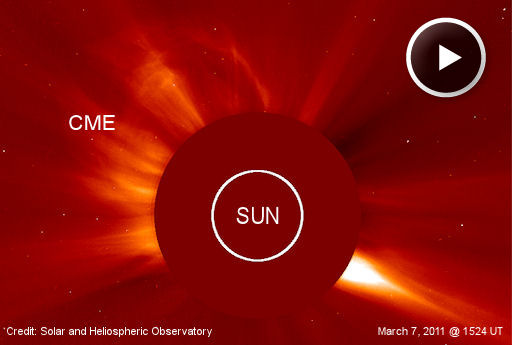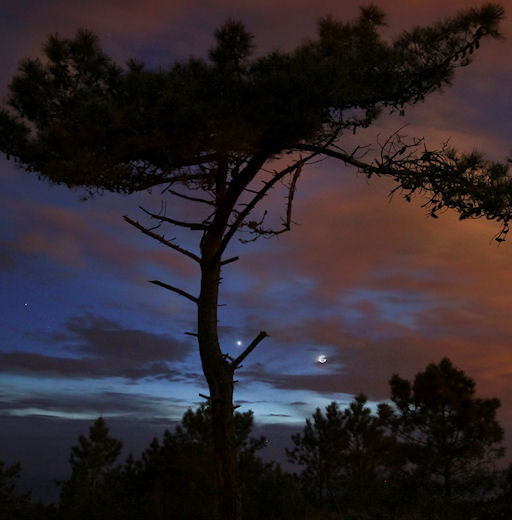They came from outer space--and you can have one! Genuine meteorites are now on sale in the Space Weather Store. They make a unique Valentine's gift. | | |
EQUINOX SUN OUTAGES: Many readers reported an intermittent loss of satellite TV reception over the weekend. Was the sun to blame? Yes and no. Senior forecaster Bill Murtagh of NOAA's Space Weather Prediction Center explains: "It is likely that the sun caused the problem, but not because of solar flares. Now is the time of year for the 'equinox conjunction,' when the sun lines up with the satellite and the receiving satellite dish. When this happens, radio interference from the sun competes with signals from the satellite and can create noise levels several decibels higher than normal. The problem, which typically persists for 5 to 15 minutes, is referred to as a 'sun outage' and is often confused with sunspot or solar flare activity."
SOLAR ACTIVITY: The magnetic canopy of big sunspot 1166 erupted on March 7th around 1400 UT, producing an M2-class solar flare and a bright coronal mass ejection (CME). Click on the image to launch a movie of the expanding plasma cloud:

The CME was not squarely directed at Earth. Nevertheless, the cloud will probably deliver a glancing blow to our planet's magnetic field on March 9th or 10th, possibly sparking polar geomagnetic storms. High-latitude sky watchers should be alert for auroras.
more images and data: from Gordon Fiander of Sheffield, UK; from David Cortner of Rutherford College, NC; from Peter Desypris of Athens,Greece; from Deirdre Kelleghan of Bray, Co Wicklow Ireland
BRIGHT LIGHTS IN THE SUNSET: Last night, when the sun began to set, two bright lights popped out of the darkening twilight. Look beneath the branches of the tree for the crescent Moon and Jupiter in brilliant conjunction:

Photo details: Canon 50D, ISO1600 F/5.6, 20 mm lens, 13s
Miguel Claro took the picture from Fonte-de-Telha, near the Atlantic coast of Portugal. "It was a lovely gathering," he says.
Readers, if you missed the show on March 6th, try looking again on March 7th. The Moon is moving up and out of the sunset, and tonight it will hover, smiling, almost directly above Jupiter: sky map.
more images: from Tamás Ábrahám of Zsámbék, Hungary; from Kevin Jung of Lowell Township, Michigan; from Doug Zubenel of De Soto, Kansas; from Jacob Kuiper of De Bilt, The Netherlands; from Ben Cooper of Daytona Beach, FL; from Chris Banks of Liverpool, England; from Monika Landy-Gyebnar of Veszprem, Hungary; from Robert Hoetink of Enschede, The Netherlands
March 2011 Aurora Photo Gallery
[previous Marches: 2010, 2009, 2008, 2007, 2006, 2005, 2004, 2003, 2002]

